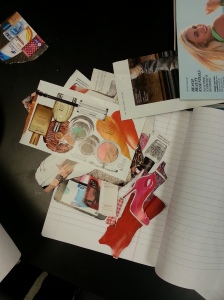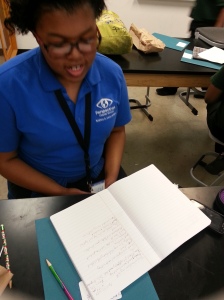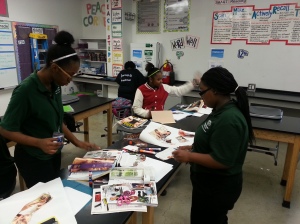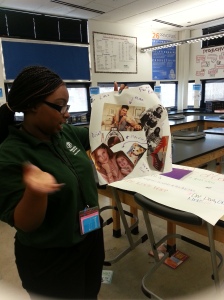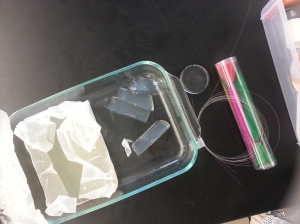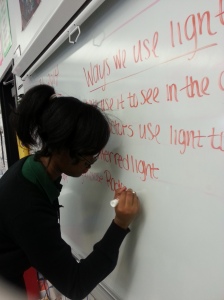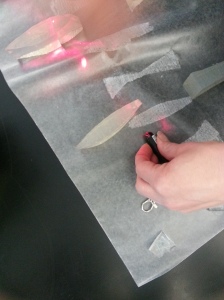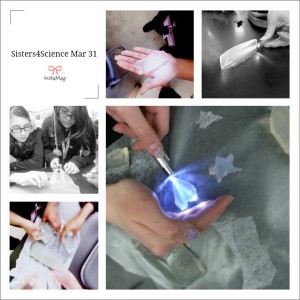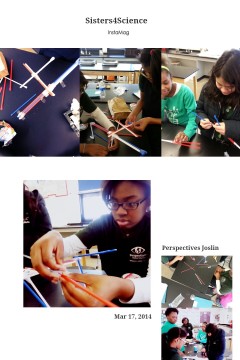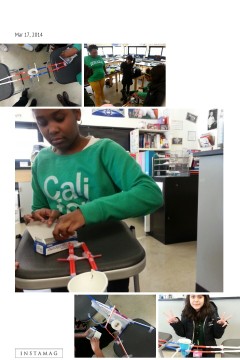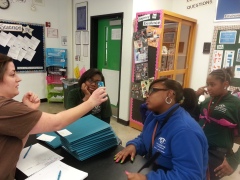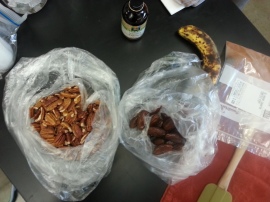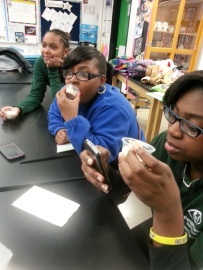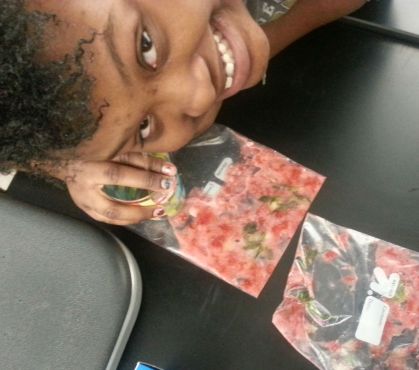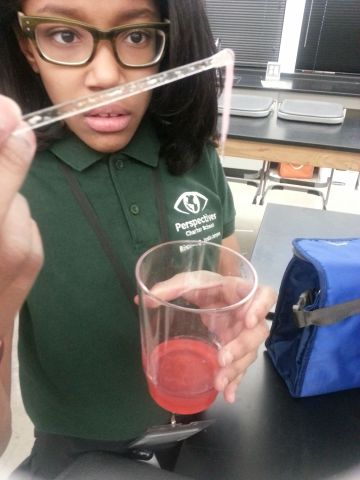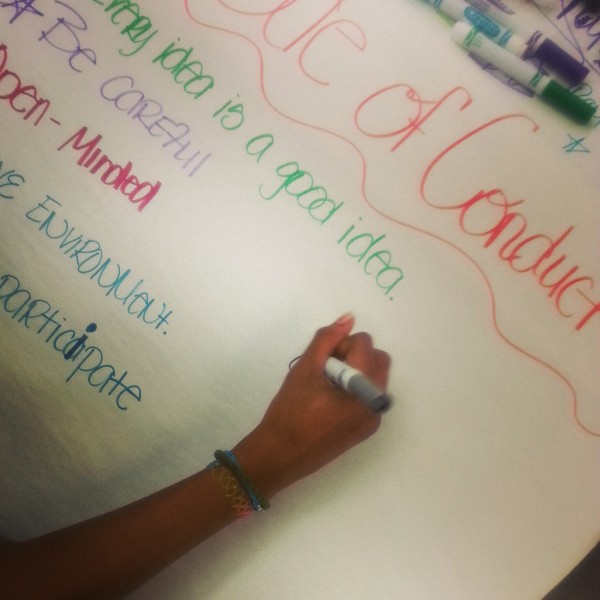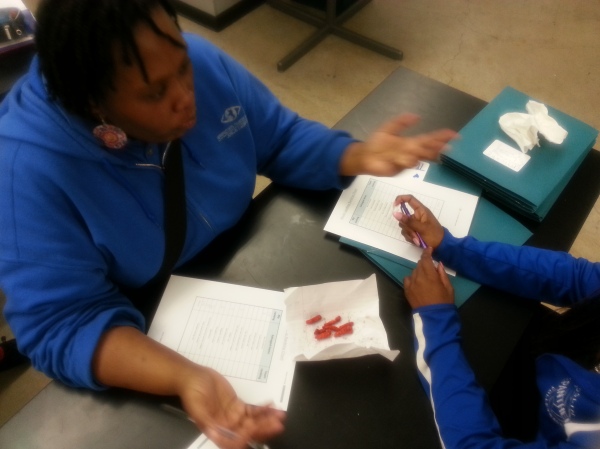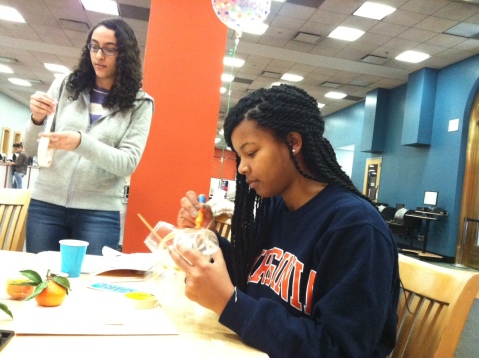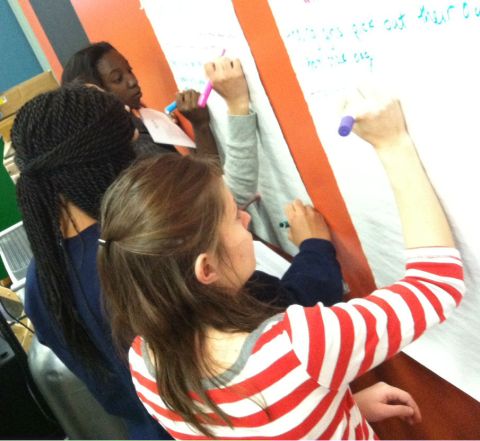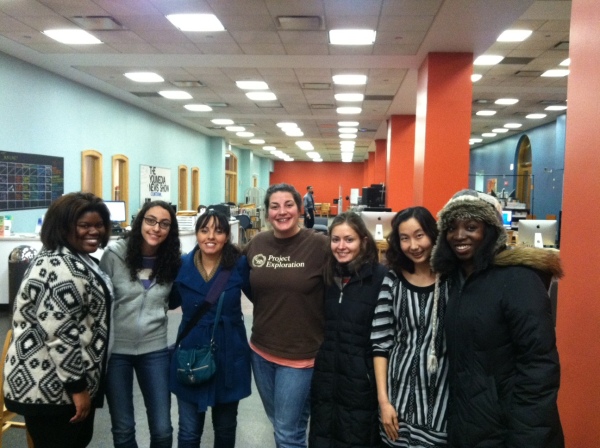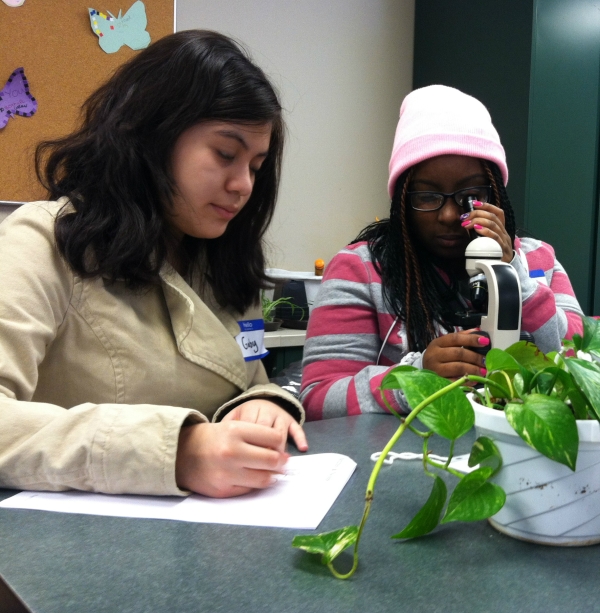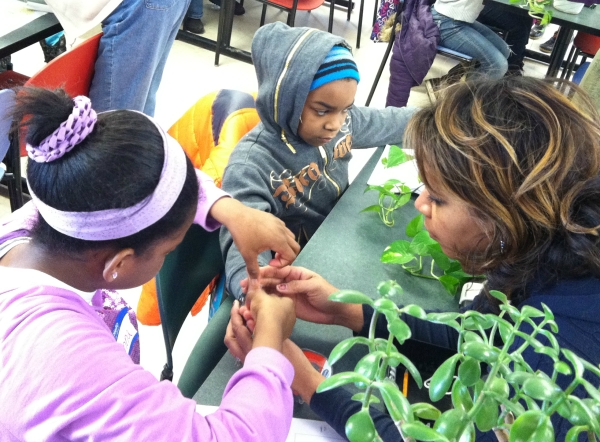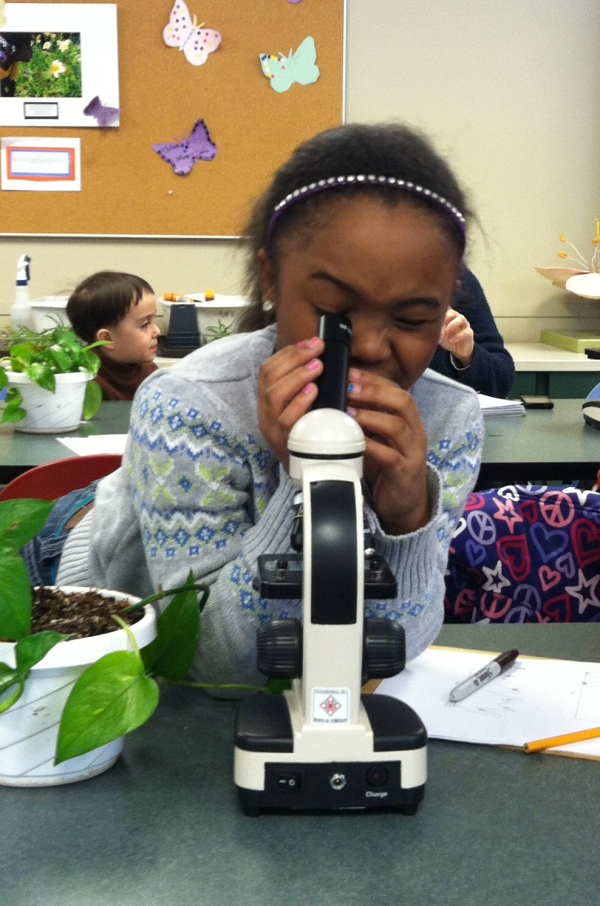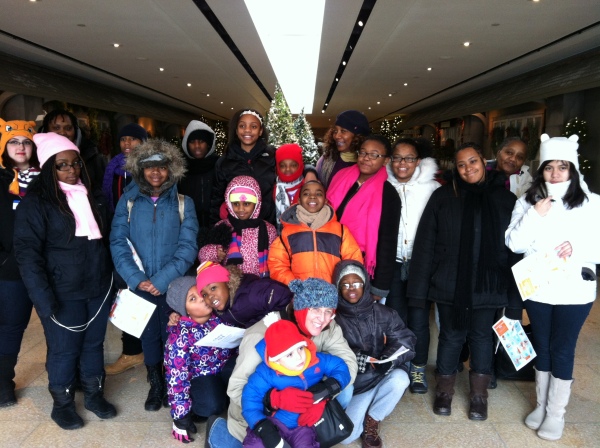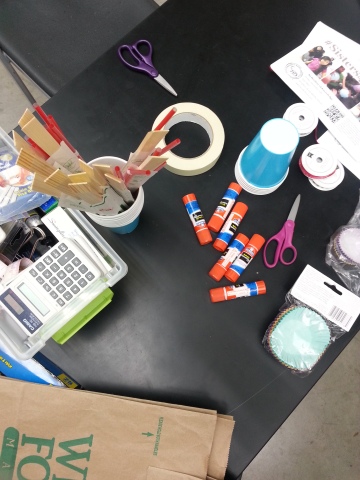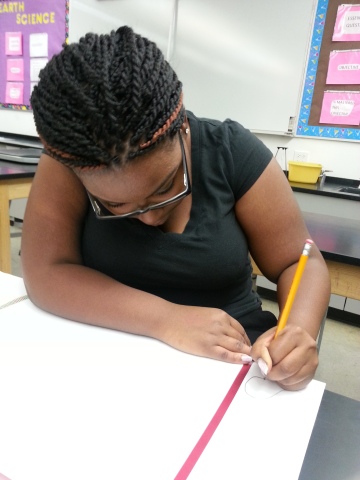Everyone was refreshed with a well-spent spring break. It has been such a joy to get together and share our special Sisterhood. For the following sessions after spring break, the girls were about to explore who they are (who I am) as being a girl through TrueChild Workshops. This workshop is designed for two sessions, 70-90 minute each, as a pilot program from TrueChild: http://www.truechild.org. We were to discuss feminine gender norms and science. Wow, it was a fascinating topic and even was a blast in our class! A week before spring break, I threw out a question in a very casual way: “Can you think of anything common between women/girls and science?” I wanted my girls to prepare for this workshop by putting a thinking cap, making connecting between science and themselves. Their responses were very unique and interesting. “I can see biological cycle. Animals and plants have a biological cycle as women do. We become pregnant.” “I can think of breast cancer. It’s medical and women.” I loved hearing their ideas of “women and science” that I have never thought of before. I mean, I have been aware of natural, biological cycle, but it was such an A-ha moment 🙂
Activity I: “Who Am I?” “What Would I Like To Do With My Life?”
Before we got into our first activity, I had the girls share their experience of being ignored or underestimated because they are girls. Aubriana had a story that she had been ignored although she was good at basketball. Last year, the school did not have a girl’s basketball team. She and her friends wanted to join in a boy’s basketball team to play together, but the boys in the team did not want them to be even to play a basketball because they are girls. Yikes! They are now in the girls’ basketball team, but I wanted to ask them why the boys would not want them to join in playing basketball. T’meyah said, “I think if girls are involved, they the boys feel less manly.” Great point! I asked them again, “Is basketball or any kind of sports only for boys? The girls were yelling at me, “No!” “It’s like this. Basketball makes boys become more masculine so if we take it then they feel like losers,” responded Aubriana.
This sharing could fill the whole 90-minute class unless we stop at some point. So, I had them calm down first by putting a thinking cap: “How would you describe yourself?” Then we had a quiet moment to write or draw “myself”—who I am as a girl. Once they were all finished, I had volunteers to share. Micah, one of the alumni students, shared her poem. Such a beautiful poem with a line that says, Less than perfect, but I love it. I could hear how confident she is to present herself as she is. T’meyah described herself as a tree with a full of leaves on it. Aubriana drew a big heart in the center and little hearts from this big heart. The heart represents her love for herself and inside the hearts, she wrote who she is: “I am tall, think, brown skinned and beautiful. I am a girl who focuses on future.” Wow, I was very proud of my girls being confident in themselves as they are. Yes, some people around us might underestimate or even ignore us just because we are girls, but all that matters is Confidence. Not the way others think of ourselves, but how we see ourselves.
For the rest of the class, I distributed women’s magazines to look through if the girls can find something to describe their lives in 10 years. On the original activity guide it says “life in 5 years,” but I have modified this a little bit since my girls are 13 through 15. If we added only 5 years, that would not be much difference. I wanted them think aloud a bigger picture of their lives in 10 years. I let the girls create a collage of “Life in Ten Years.” The girls had so much fun expressing their lives through the collage! My girls were very excited to see what they would like to be and to do in 10 years as the collage were being completed. One girl still struggled; she has never thought of what she would like to be or study in college. “Sweetie, what kind of jobs or work would you like to do?” I asked. “I don’t know, but something that makes a lot of money,” said Amoriana. “Okay, let’s look through the magazines if you can find anyone or anything that makes a lot of money.” We grabbed a few magazines and looked through together. Amoriana was looking at the expensive shoes so I asked, “Would you be interested in being a shoe designer? See these shoes are pretty.” Pointing another shoe pairs, “I like that one better. Would they make a lot of money?” she asked. “Yes, they do. Do you see how expensive these shoes are,” with my eyes rolling, I responded. On the magazine, these shoes were like over $900.00-$1,300.00 a pair. Amoriana was sorting through these photographs of shoes like a shoe designer.
We had 10 minutes left towards the end, so I assigned them a two-minute mini presentation so that everyone could have a voice as they shared their collages. “I want to get married, have a baby, and a pet. I like red shoes I will have a drink with my husband. Since it is after 10 years, it is appropriate, Ms. Kim,” said Faith. I see Faith does really want to have her own family. Then it was T’meyah’s turn, “I love make-ups, but I’m not sure if I want to be a make-up artist. Here are dresses, bags, and a phone. I will definitely be dating.” “Would you be getting married?” I asked. “Probably not. It is still early for me,” she smiled. Ms. Carmichael, a science teacher at Perspectives Joslin, joined our conversation “getting married in 20’s or not.” “It’s okay to get married in 20’s, but make sure you are still an independent women before and after you get married.” Here was our word, Independence. Since it was past 5:30pm, we had to leave this for next week.

